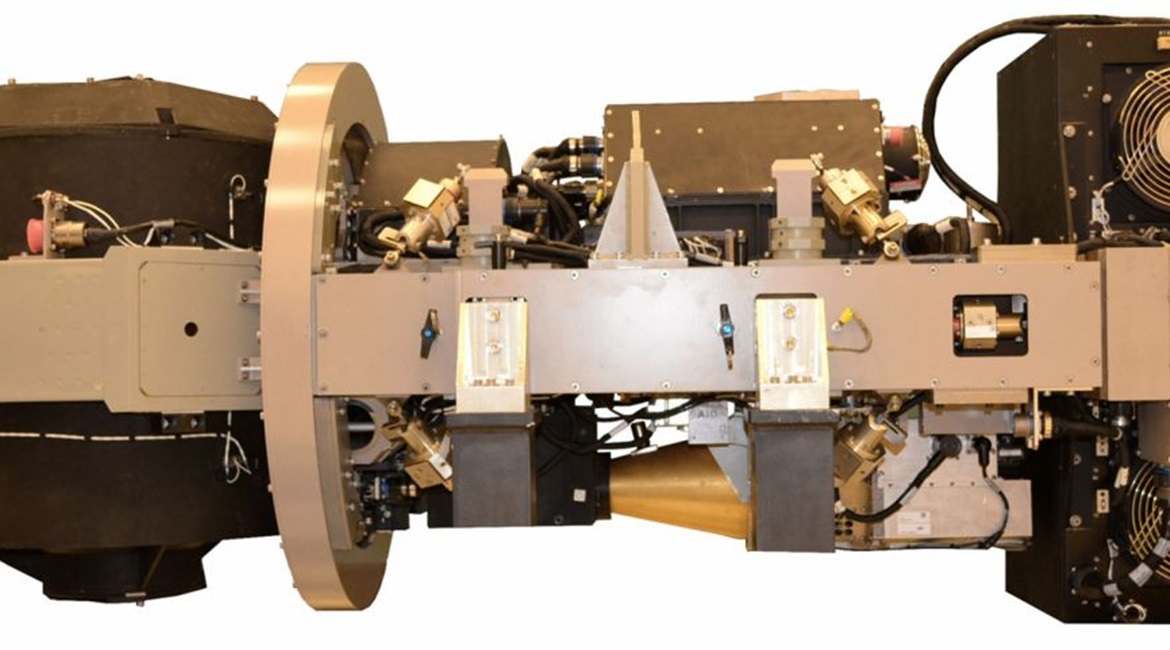
The US Air Force (USAF), along with contractors Collins Aerospace Systems and Lockheed Martin Skunk Works, recently completed flight testing and development of the Senior Year Electro-Optical Reconnaissance System sensor (SYERS-2C) on the Lockheed U-2 Dragon Lady high-altitude reconnaissance aircraft.
The entire U-2 fleet, with this milestone, has received this upgraded electro-optical/infrared (EO/IR) sensor capability that provides increased optical performance and highly-accurate long-range tracking for superior threat detection in a wider range of weather conditions, according to a Lockheed Martin statement. The 10-band, high spatial resolution SYERS-2C sensor better provides the ability to find, track, and assess moving and stationary targets.

The Senior Year Electro-Optical Reconnaissance System sensor (SYERS-2C) recently installed on the US Air Force’s fleet of U-2 aircraft. It will provide better EO/IR sensor capability, allowing increased optical performance and highly-accurate long-range tracking for superior threat detection in a wider range of weather conditions. (Lockheed Martin)
Lockheed Martin spokesperson Erica Tierney said on 18 February that though flight testing was completed in December, and that upgrading the sensors has been an ongoing effort. She said only one legacy SYERS system at a time could be taken out of the field for an upgrade. These systems can now be used for intelligence, surveillance, and reconnaissance (ISR) missions.
The USAF has 33 U-2 aircraft, including five two-seat trainers and two ER-2s operated by the civil National Aeronautics and Space Administration (NASA). The U-2 initially entered service in 1956.
This article, originally published on 18 February, was updated with imagery.
Looking to read the full article?
Gain unlimited access to Janes news and more...




